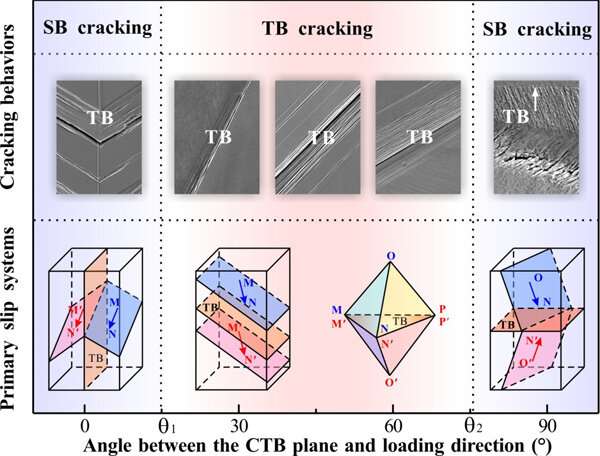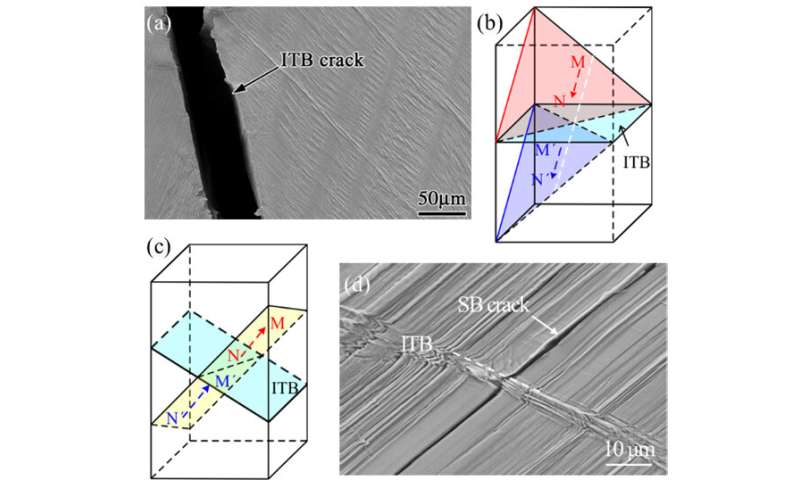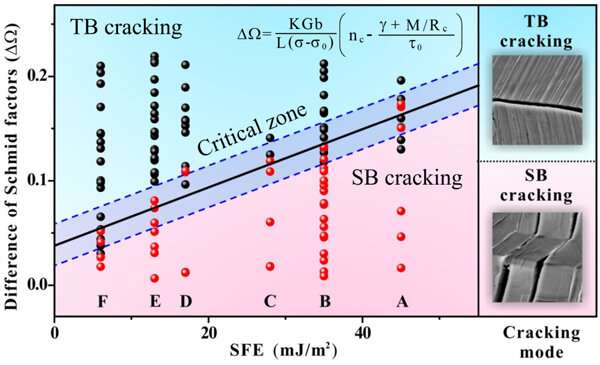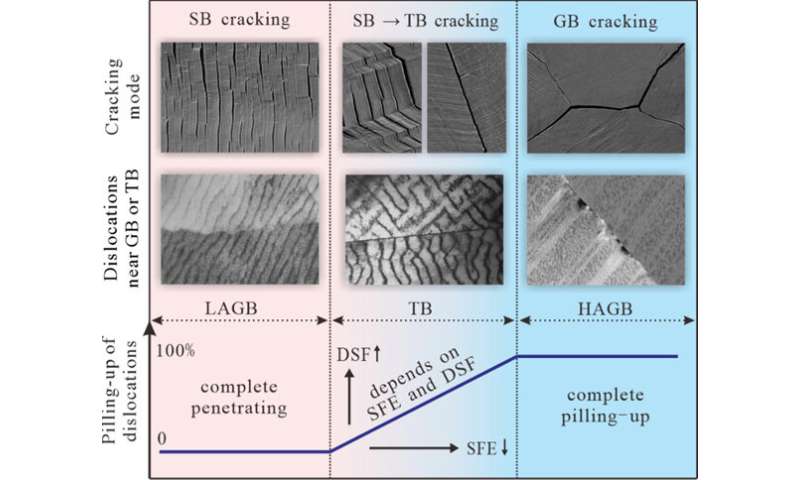Can twin boundaries resist fatigue cracking?

Grain boundaries are widely distributed in metallic crystals and have important impacts on their mechanical properties. Among them, high-angle grain boundaries (HAGBs) can strengthen metallic materials, but the stress concentration at HAGB often leads to fatigue damage and cracking. Given the particularity of the interaction between twin boundaries (TBs) and dislocations, it is worth clarifying whether TB resists fatigue cracking or not.
In the past ten decade, Prof. Zhang Zhefeng's research group from the Institute of Metal Research (IMR) of the Chinese Academy of Sciences has carried out systematic studies on the fatigue cracking behaviors of various TBs, and some new progress has recently be published in Progress in Materials Science.
The researchers discovered included angle between the coherent TB (CTB) and the loading axis plays a decisive role in fatigue damage. When the CTB and the loading axis have an interaction angle range of 20 o to 70 degrees, fatigue cracks preferentially initiate along the CTB. In other cases, fatigue cracks preferentially initiate along the slip bands.
When the incoherent TB (ITB) is perpendicular to the loading axis, dislocations are easy to accumulate at the ITB, leading to the preferential cracking at ITB. When the ITB is parallel or inclined to the loading axis, the strain compatibility at the ITB is better, and fatigue cracking occurs preferentially along the slip band.
The fatigue cracking at TB in polycrystal is related to the stacking fault energy (SFE) and orientation. The lower the SFE is, the greater the orientation difference between the two sides of TB is, the easier is the fatigue cracking along TB; and on the contrary, the slip band is more prone to fatigue cracking. In terms of the Schmid factor difference (ΔΘ) and SFE, a quantitative criterion for fatigue cracking was established.
Combined with previous studies on the fatigue cracking behaviors of HAGB and low-angle GB (LAGB), it can be determined that the fatigue cracking resistance of different GBs decreases in an order of HAGB > TB > LAGB, while TB cracking or not depends on SFE and crystallographic orientation.
-

Fatigue damage behavior of ITB in copper bicrystal at different angles to the loading axis. (a,b) ITB is perpendicular to the loading axis; (c,d) ITB inclines to the loading axis. Credit: IMR -

Synergistic effect of stacking fault energy and crystal orientation on the fatigue cracking behavior of polycrystal copper alloy. Credit: IMR -

Fatigue resistance of different kinds of GBs: LAGB > TB > HAGB. Credit: IMR
More information: Linlin Li et al, A review on the fatigue cracking of twin boundaries: Crystallographic orientation and stacking fault energy, Progress in Materials Science (2022). DOI: 10.1016/j.pmatsci.2022.101011
Provided by Chinese Academy of Sciences




















